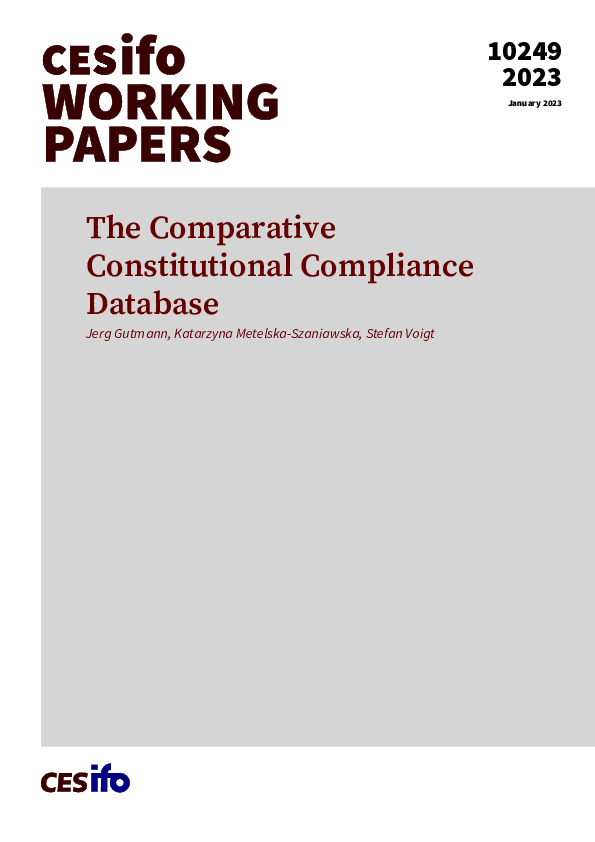The Comparative Constitutional Compliance Database
CESifo, Munich, 2023
CESifo Working Paper No. 10249

This article introduces a novel database that measures governments’ compliance with national constitutions. It combines information on de jure constitutional rules with data on their de facto implementation. The individual compliance indicators can be grouped into four categories that we aggregate into an overall indicator of constitutional compliance: property rights and the rule of law, political rights, civil rights, and basic human rights. The database covers 175 countries over the period 1900 to 2020 and can be used by researchers interested in studying the determinants or the effects of (non)compliance with constitutions. Our investigation of the stylized facts of constitutional compliance reveals a long-term increase in compliance, which occurred primarily around the year 1990. The Americas experienced the steepest increase in compliance, but also Africa and Europe improved particularly at the end of the Cold War. Democracies ― particularly those with parliamentary and mixed systems ― show more constitutional compliance than nondemocracies, among which military dictatorships perform the worst. Constitutional design also matters: Constitutions that allow for the dismissal of the head of state or government for violating constitutional rules are being complied with more.
Public Choice